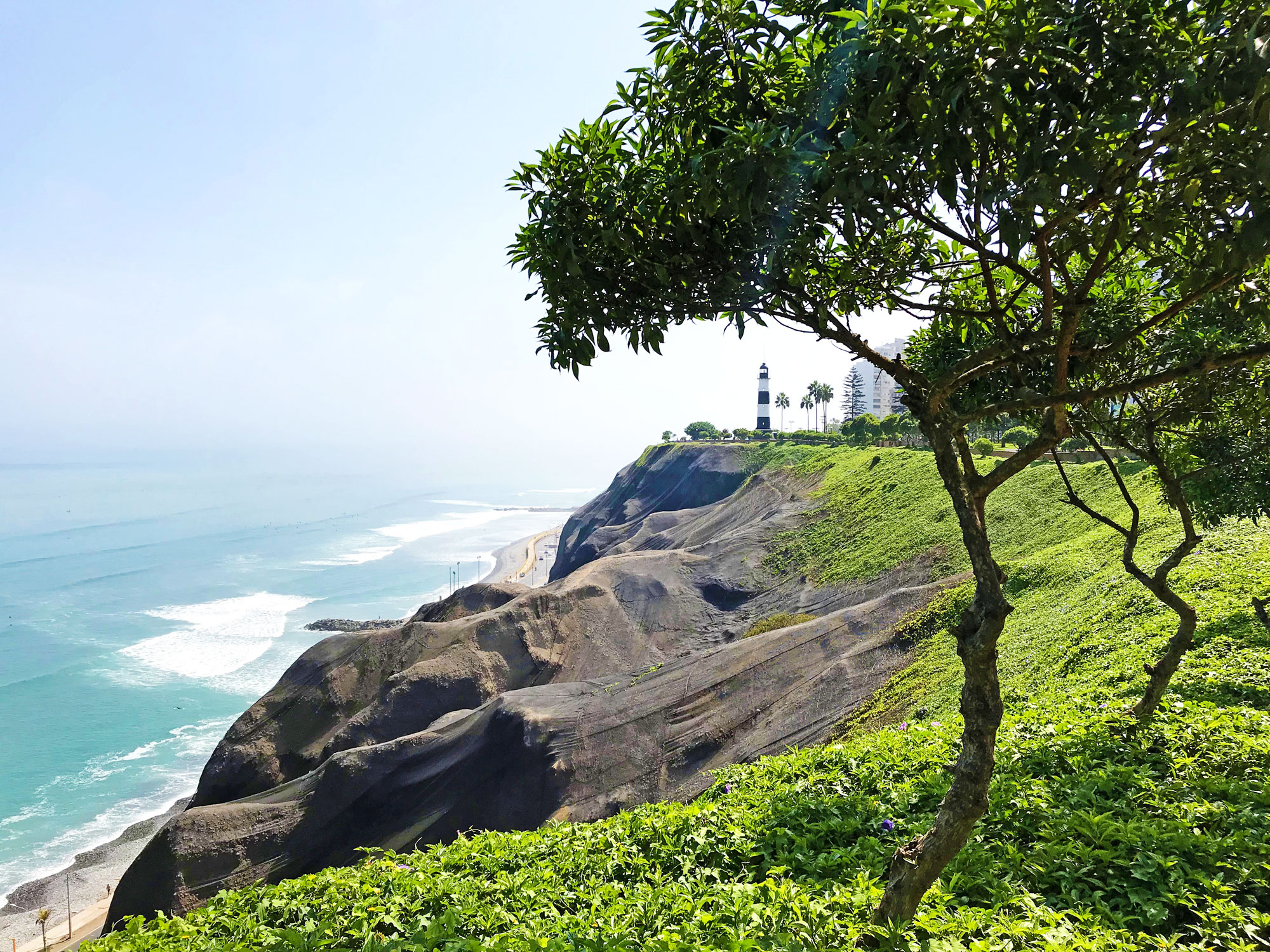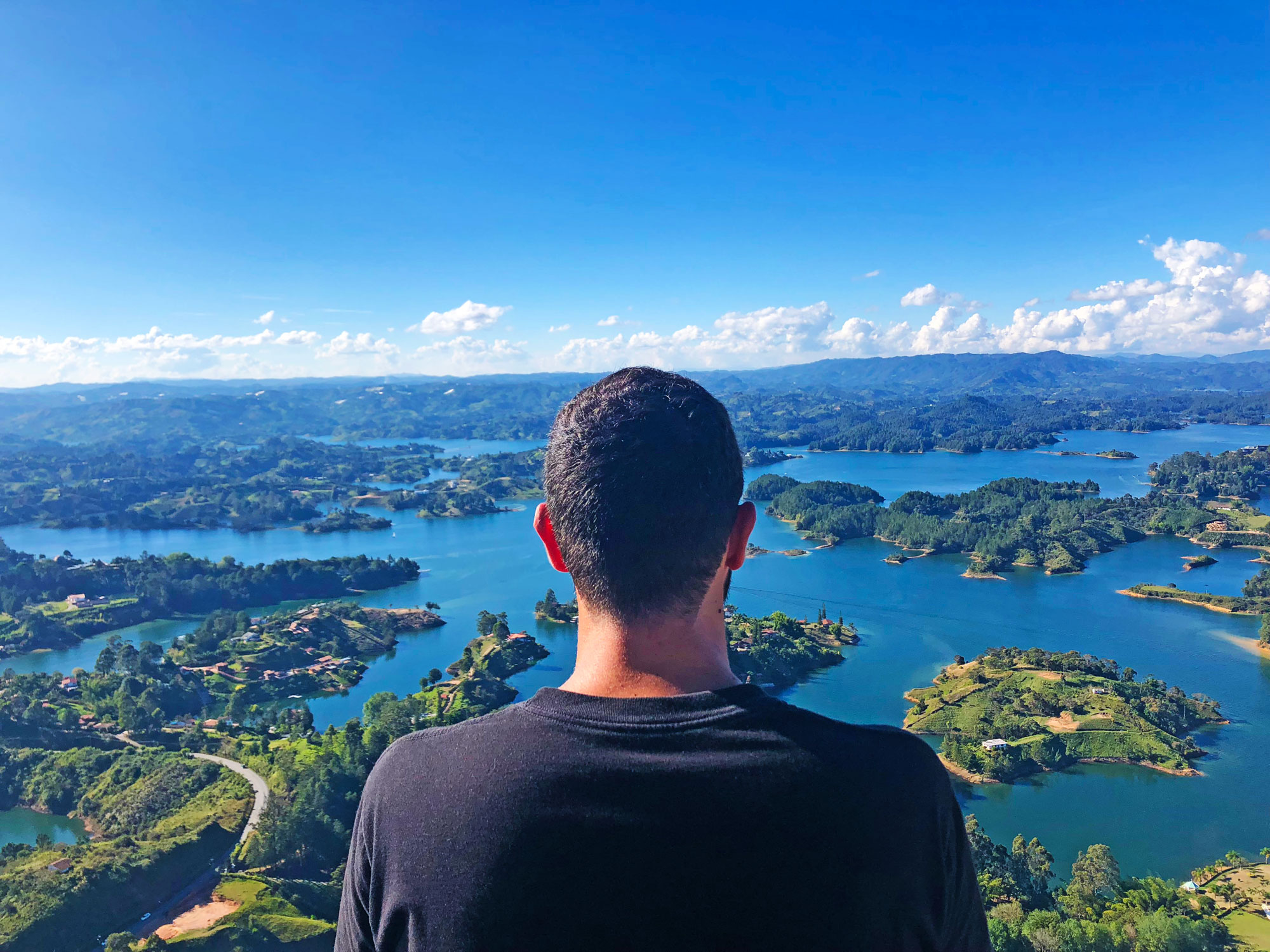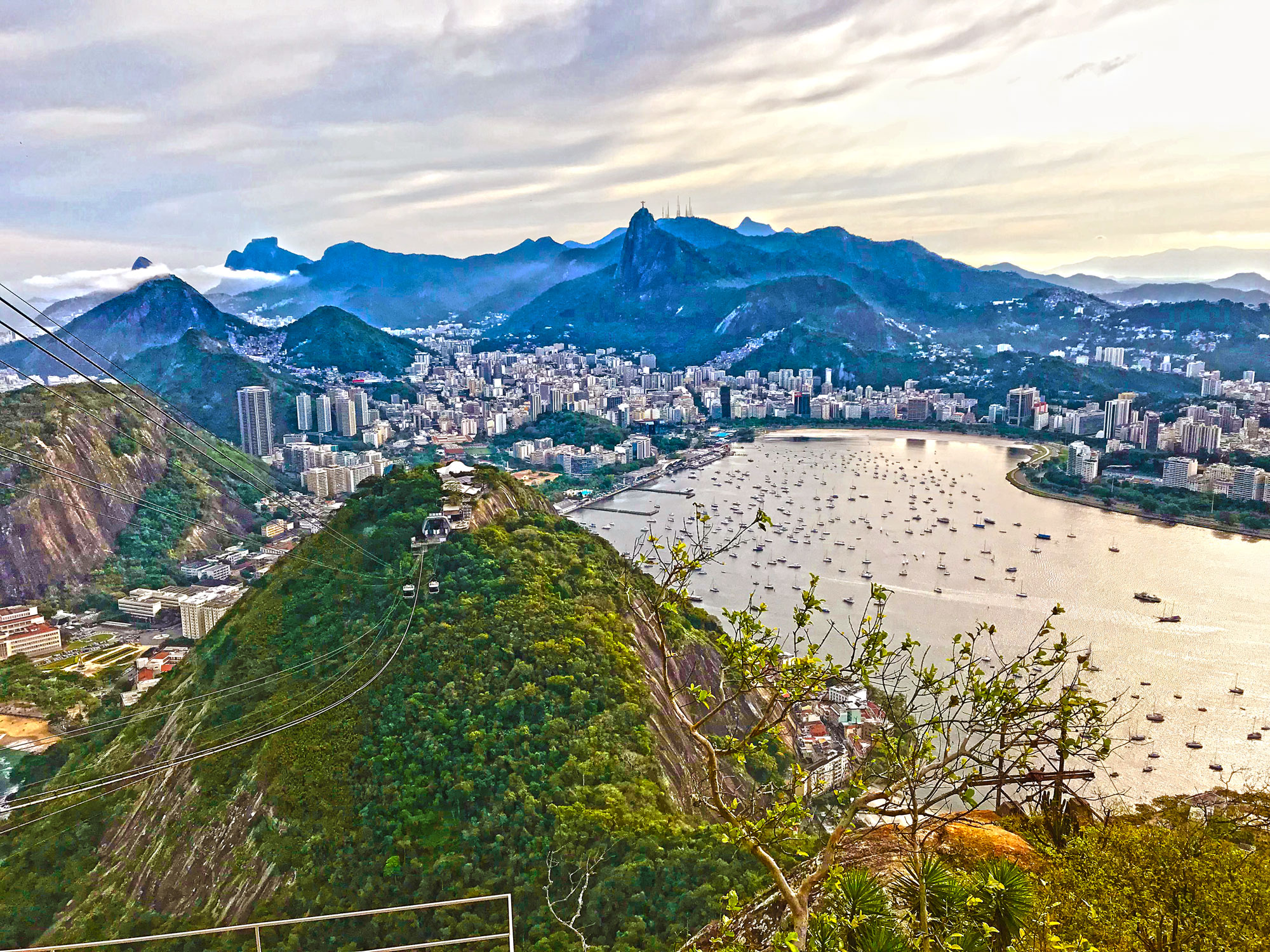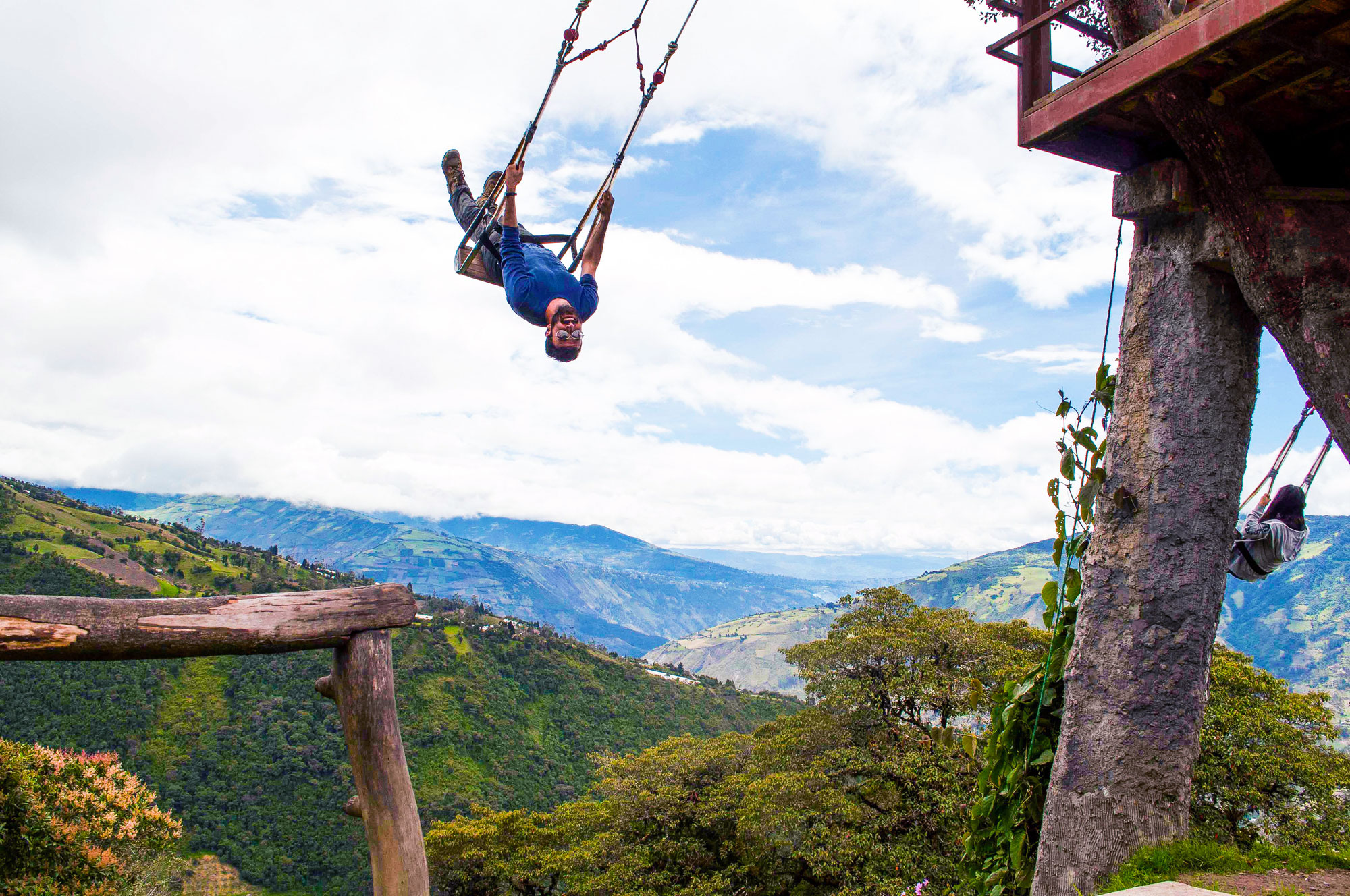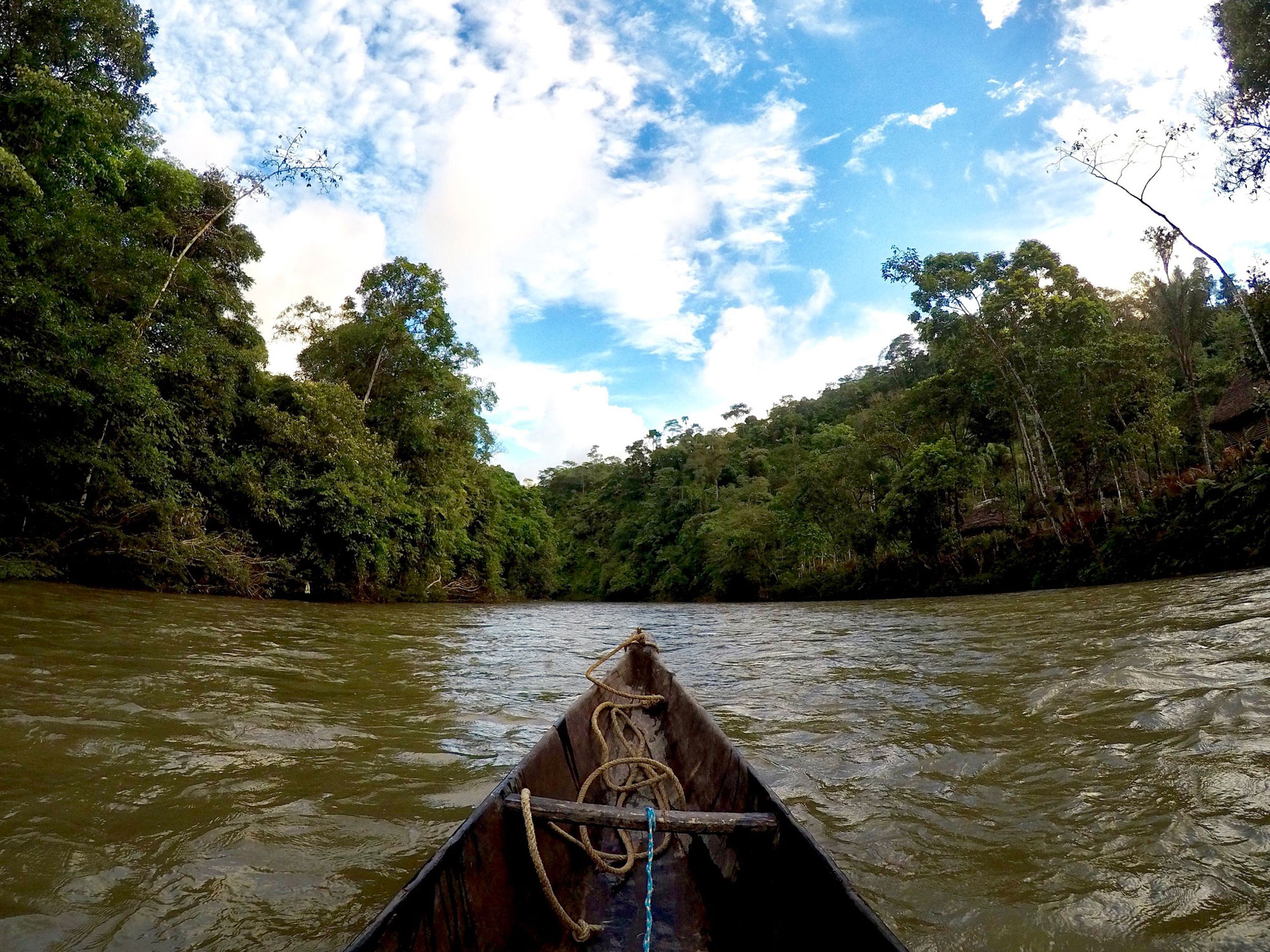When I told the taxi driver that I would have spent an entire month in Lima, he looked at me as I was crazy. According to him, and to many travel blogs I read, Lima is just a city where you spend one or two days, a hub where to step briefly before taking your flight to Cusco. Well, I disagree: Lima is my favorite Latin city so far and I will tell you why!
The Tribe
In that second chapter with WifiTribe we were 22 people, mostly from the US and mainly girls. Some of them I already knew because they joined also the Ecuadorian chapter.
We were based in the Miraflores district, the most touristic, but also the one with more restaurants and activities to do.
We had different apartments (4-5 people each) in the same building: a 24 floors skyscraper, with two pools, a terrace and a gym. We had everything we needed, I would say!
The city
I love Lima. Really, I love it. The first day I was almost crying when I ate my first ceviche: finally something with a taste! And what a taste!
The first morning I was already running on the Malecón, the cliff top walkway from where you can see far along Lima’s gently curving coastline and a good distance out to sea. A place full of green, far from the pollution of the city, where people meet in the early morning to run, workout, doing slackline and also kung fu!
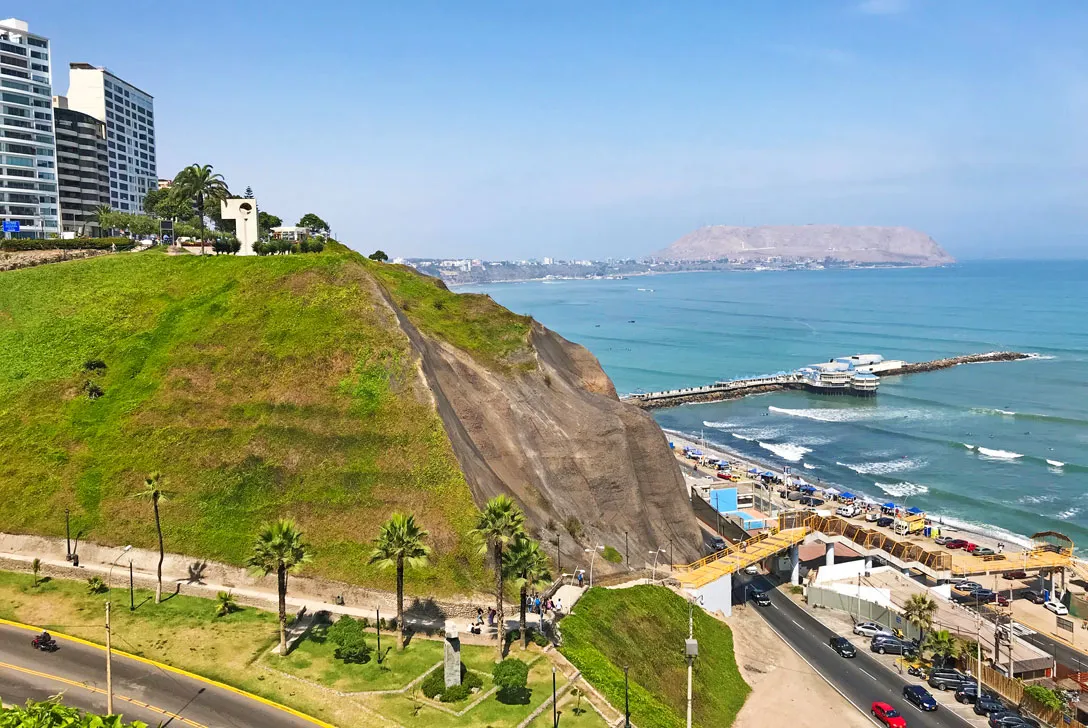
The green Malecón’s cliffs
Ok, maybe coming from the grey and rainy Quito made everything brighter and more positive, but I felt that living in the Miraflores district was almost like living in Barcelona: you have the best restaurants in South America, awesome cocktail bars, concerts, events, sports… In one month there, I surfed, played tennis, swam in the pool and had salsa lessons.
Moreover, as opposed to Quito, I actually felt safe in Miraflores. It was a pleasure walking the streets during the day, but also during the night: once, I walked 4 km by night from Barranco to my apartment and the city was full of life also after midnight.
The district of Barranco also deserves a special mention. It’s considered the hipster area and with reason. You can find very hipster markets (La Feria de Barranco), old colonial villas restructured as cocktail bars or clubs (Victoria Bar and Ayahuasca), nice little streets full of graffitis… and the famous Puente de los Suspiros, shrouded in mystery and romanticism. It is said that if you cross it by holding your breath, your wishes will come true.
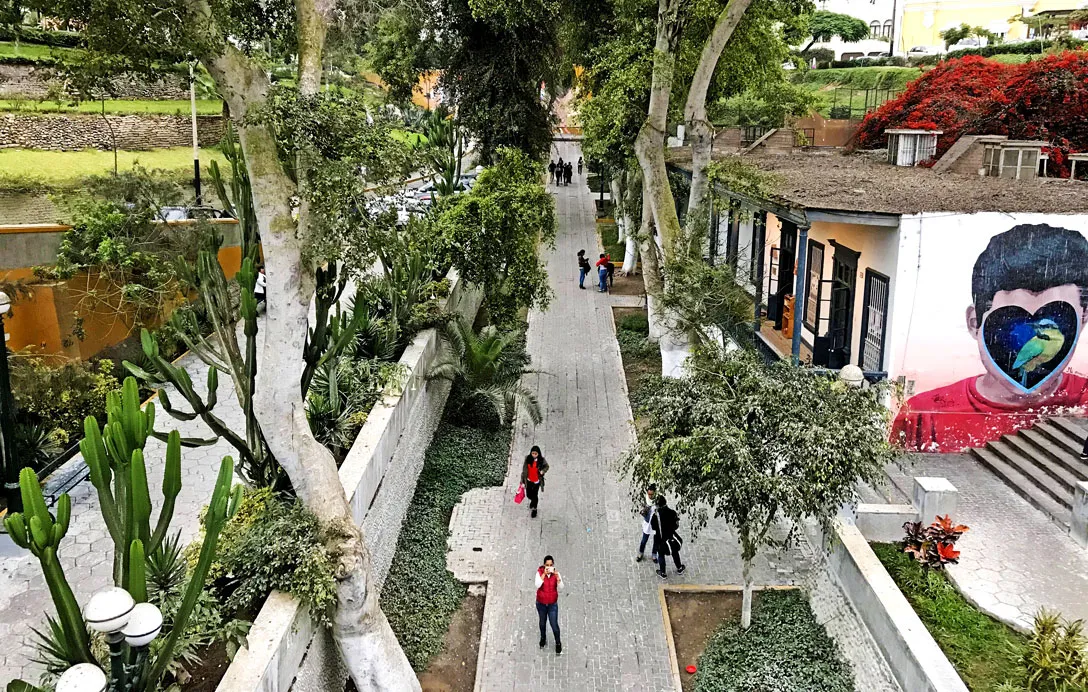
View from the Puente de los Suspiros
When I say that I love Lima, I almost always refer to those two districts, Miraflores and Barranco. The truth is that they don’t actually represent Lima. The real city is different. It’s something else. Try to get the elevated train that goes from one side to the other of the city and you will realize how the true Lima is: a lot of poverty in the suburbs, houses made of bare bricks, sometimes even without running water. The multiple migrations of the last ten years populated the outskirts, leaving behind a wake of poverty and emargination.
That said, I can come back to my bubble of happiness which is Miraflores, where actually the wealthy class lives, together with all the tourists, of course.
Weather
The weather was good the first two weeks of May, especially for being almost winter. Lima is in a huge desert and it almost never rains. I really appreciated it, after the month in Quito where it rained every day!
However, when I got up the second morning and looked out the window I was a bit puzzled: the city had disappeared! You could barely see the building on the other side of the street as everything was covered in fog.

View from my apartment in a foggy day
They call it garùa and it’s the usual mist that envelops the city in winter, in particular Miraflores, as it comes from the sea. The good thing is that around noon, it gives way to the sun. But actually, the last two weeks there was no sun at all, just mist.
Fun fact: while in Lima, there have been two little earthquakes! The first one woke me up at 6am and I felt it very well, being at the 22nd floor. I didn’t know if I was supposed to leave the building or if it was just a little tremor. In fact, the first thing I notice when I arrived in Lima was the number of signs about earthquakes, like: “Do not use in case of fire or earthquake” or “This area is safe in case of earthquake”. That was a little bit scaring, especially that morning! Luckily it ended after a few seconds, with no consequences.
Food
Food is incredible! After eating just rice and chicken in Quito for a month, I was so happy to eat so many different dishes!
Of course, you cannot miss the typical ceviche, a dish made of raw fish marinated in lemon with spices. There are many restaurants that prepare a good ceviche, like Punto Azul (very good, but a bit expensive) or Aventuras Marinas, my favorite place where you can have the menu del día with two dishes and a beverage for just 18 soles (about $5.50).
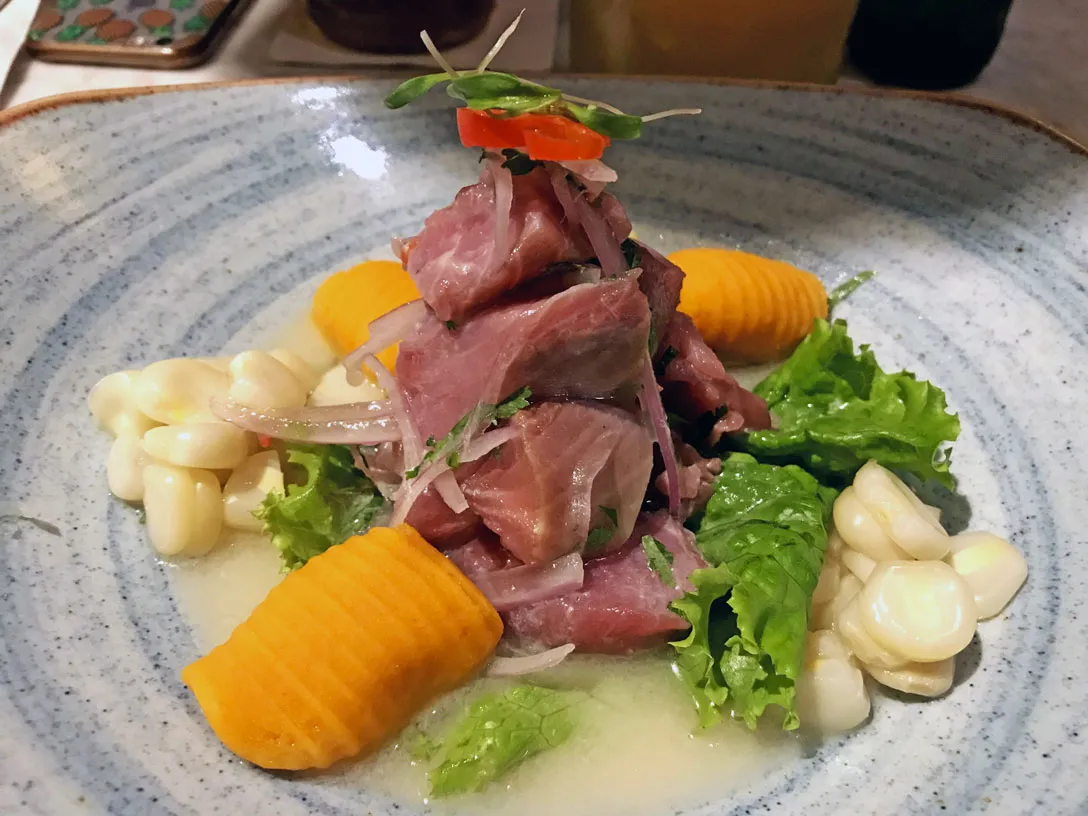
A super tasty ceviche
But in Lima you can taste many different dishes based on fish, like the Pescado a lo Macho, grilled fish with a tasty seafood sauce; or Tacu-tacu: fried rice with beans, again with a seafood sauce.
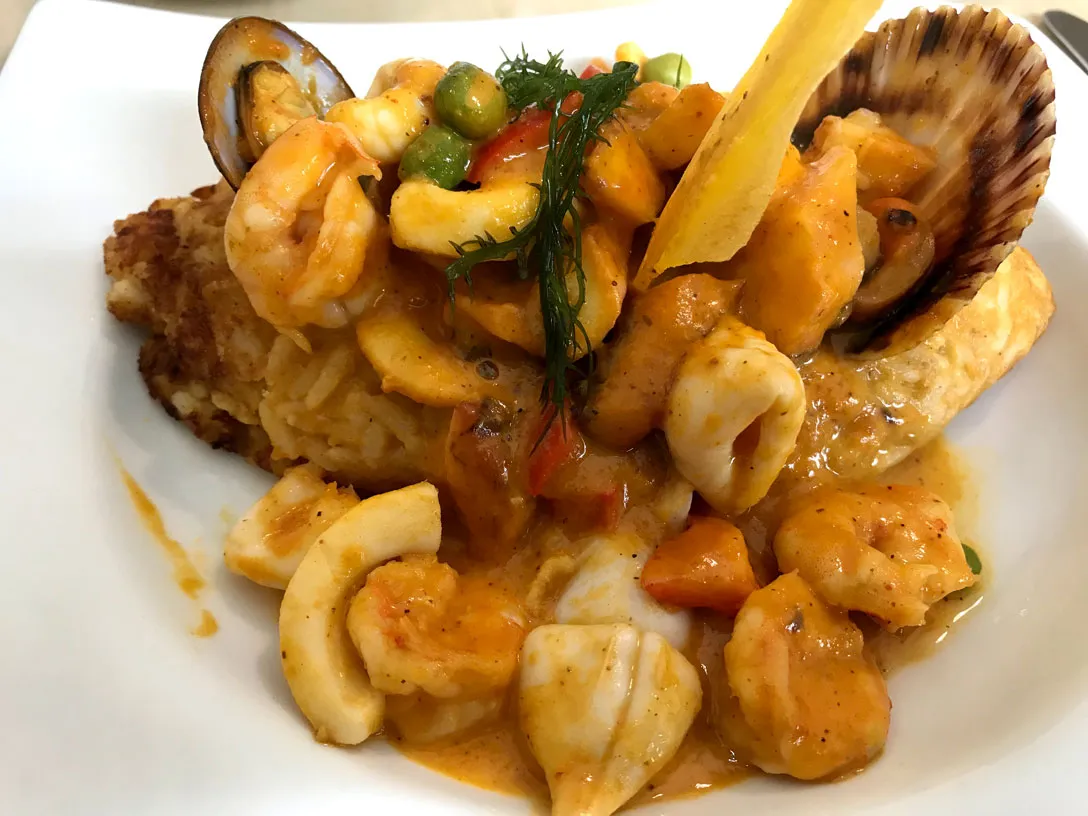
One of my favorite dishes: Tacu-tacu
You should also try the Causa Rellena, a cake-like dish made of yellow potatoes, that wraps chicken, octopus or seafood. Delicious!

Causa Rellena with octopus. Amazing!
A discovery of the last minute was La Picantería de Surquillo, an almost hidden and informal restaurant where you can choose one kind of fish of the day among many and then select three different way you want it to be cooked. With just one fish we were able to eat in two people. A lot! The first half of the fish was prepared as ceviche, while the second one as grilled fish with a super tasty sauce. Finally, with the bones, they cooked a very good soup.
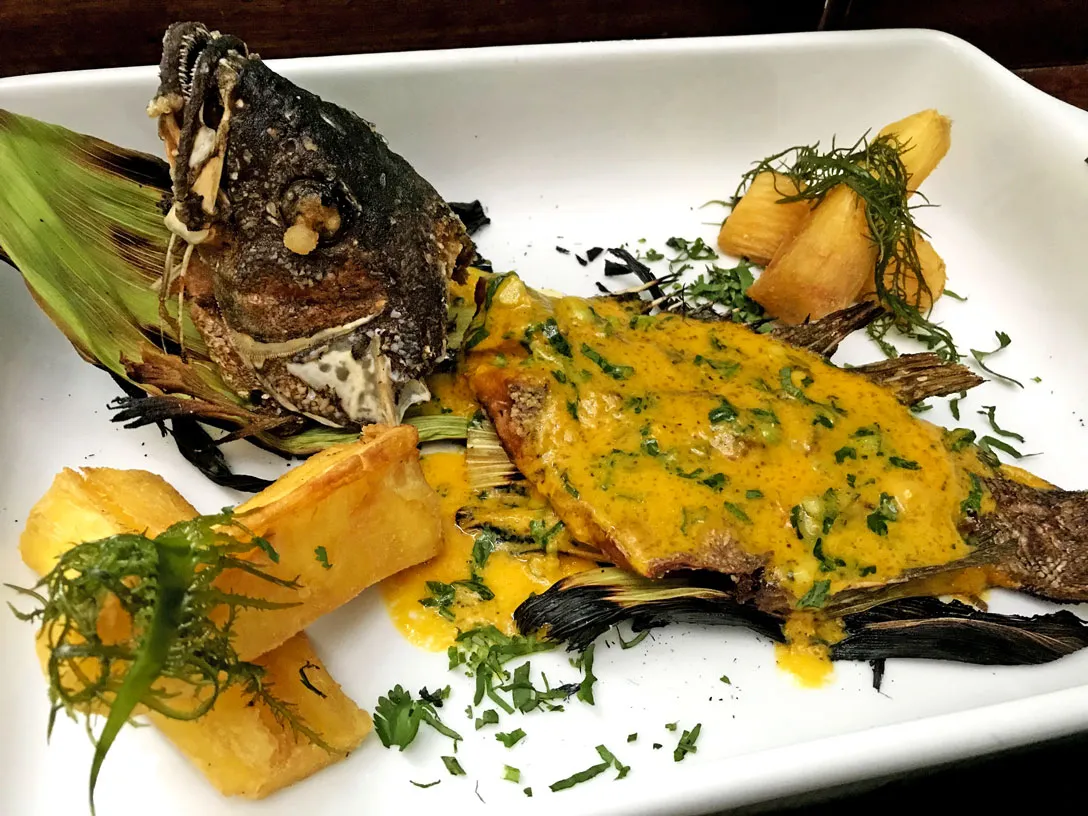
The grilled fish at Picantería
If you are not into fish, don’t worry! Another typical dish is the Lomo saltado, a stir-fry that combines marinated strips of sirloin with onions, tomatoes and french fries. It comes from the Chifa tradition, the Chinese-Peruvian fusion cuisine, that mixes culinary elements from both the cultures.
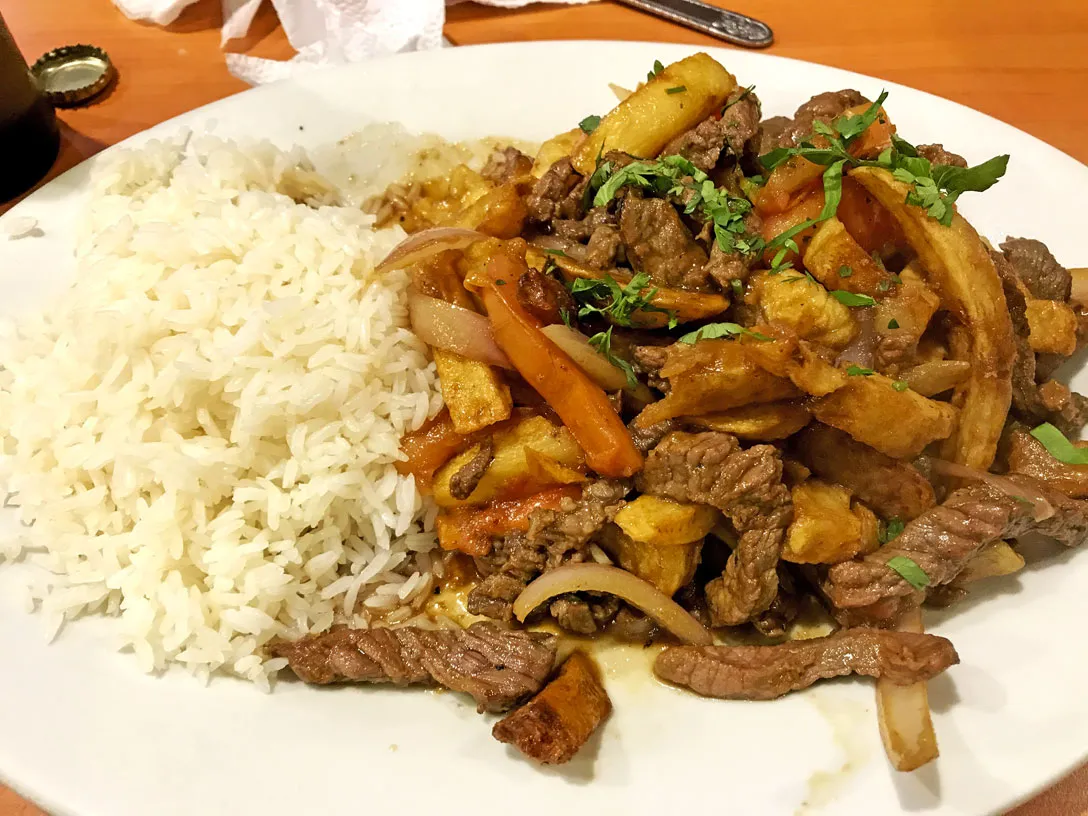
The typical Lomo Saltado
If you like to eat differently, you can also try the Anticucho, a skewer of cow’s heart. I can assure you that it’s very tasty!
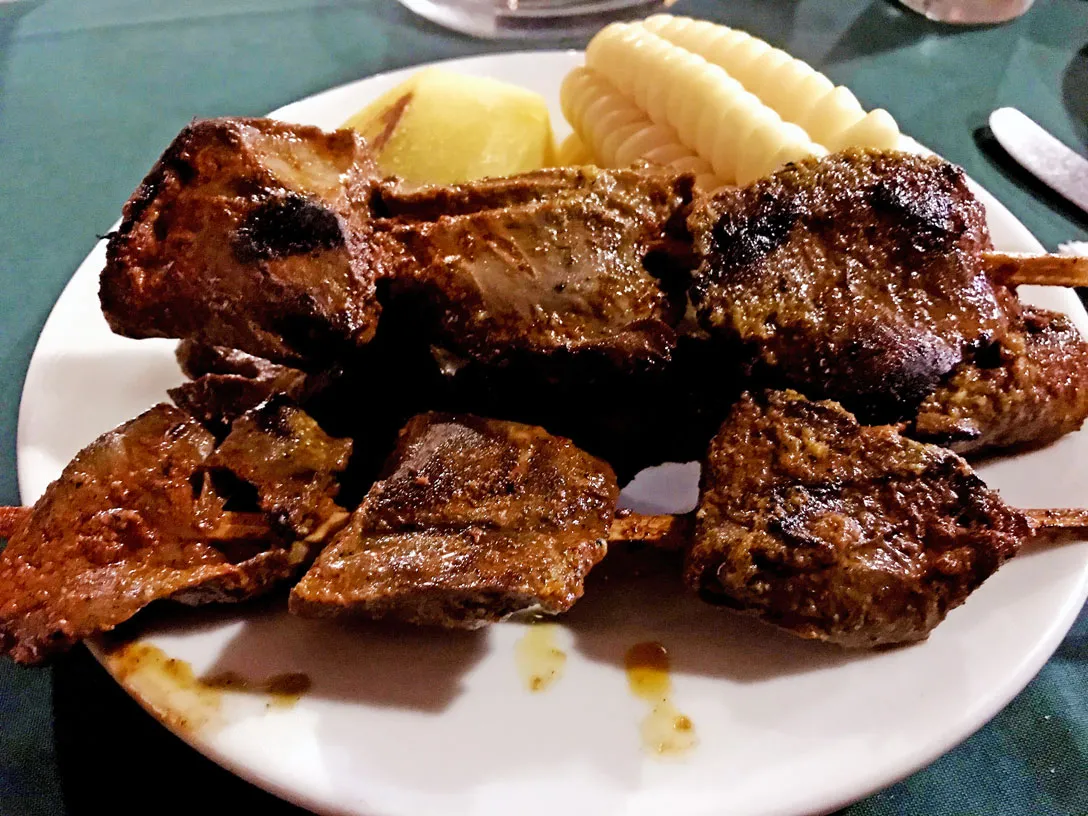
The anticucho. Are you brave enough to try it?
Apart from food, I should mention also drinks! Pisco Sour is the national drink (even though the paternity of this cocktail is disputed with Chile), made with Pisco, lemon and egg white. It has many variations: I recommend the Maracuya Sour, made with Passion Fruit.
Desserts are also very tasty. You should try the Suspiro a la Limeña, made with condensed milk and eggs: very sweet! Or the Mazamorra Morada, a street food made with red corn and cinnamon.
Transportation
Traffic in Lima is crazy! If you have to go from Miraflores to the city center in the northern part of the city, between 6pm and 9pm it’s almost impossible. You will get stuck in the traffic for hours, no matter if you got a bus or a taxi.
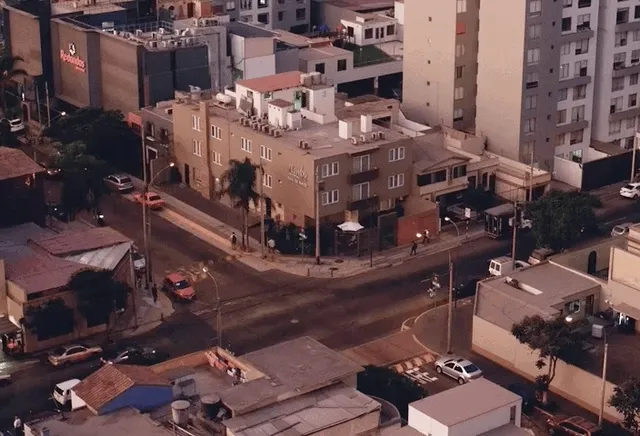
Traffic in Lima - By Genna Contento
In Lima there are many means of transport. The Combi is a very small van (about 10 sits, I think), quite dirty and unsafe. Walking the streets, you will see many of them, picking locals up from any corner, with someone yelling the list of stops. They are also called combis asasinos (combi killer), because they are super fast, the driver drives like crazy and there are always many accidents.
The second type of bus is the Colectivo. It’s actually a bus (I took it a couple of times) and it almost doesn’t stop, you have to catch it on the fly, while the guy who sells the tickets yells at you Baja! Baja! Baja! or Sube! Sube! Sube! It’s very cheap (about 2 soles - $0.60), but it’s hard to take for tourists: it doesn’t have a clear list of stops, just a list of districts on the side. You have to take it and guess where you should stop.
Finally, there is the Metropolitano, an official bus with a specific itinerary across the city. You cannot buy the ticket on the bus, but you need a special rechargeable card. Or you can just ask one of the random guys outside the turnstiles: he will pass his card for you, in exchange for a little fee.
Anyway, the best option is always Uber or taxis. Just be sure of negotiating the fare before, because taxis in Lima don’t have the meter and you don’t want to be billed an unfair amount. Moreover, if you are in a remote district, just not get a taxi from the street, it can be dangerous! Opt for Uber, in that case.
People
The reason why I enjoyed so much Lima is that I met many locals and that made me live the city like one of them!
A friend in Barcelona who lived in Peru (thanks Zoe!) introduced me to one of her friends and I found myself hanging out with Limeñans, going to eat in very local restaurants, dancing salsa and reggaeton in what they call “decadent” clubs (El Tizón and El Dragon), attending concerts of local bands, eating street food in quite safe places (Chabuca Granda)… They were so welcoming, open and kind!
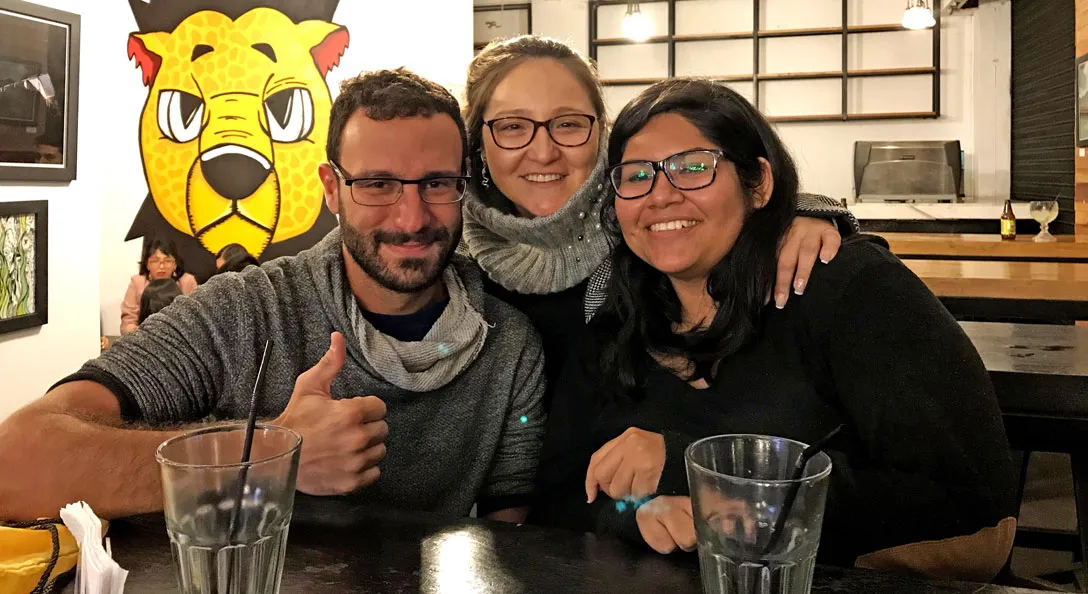
Hanging out with Peruvian friends :)
During that month I had an epiphany: I understood the reason why I am traveling. When I started my adventure I wasn’t really sure if I was going to like that lifestyle, nor I had a real reason for traveling, apart from discovering new places. I was more into nature and adventure than in meeting people or living in a city.
Now I realized that what makes me really happy about traveling is meeting local people. And staying an entire month in the same city instead of backpacking is essential for that! Slow traveling is the only way of getting to know deeply about the country’s culture and living like a local.
Someone once asked me: “But if you work the whole day and you do trips only during the weekends, how can you really see the country in just four weekends?” Well, I’m discovering that what’s matter to me is not doing trips, but living the place for real. And what’s the best way if not meeting locals? Not only they can recommend you the best places, but they can also tell you about the history of the country, explain to you how they live daily or tell you about their origins.
Peruvians, like many other Latins, are a melting pot of different cultures. Of course, you can find people with Spaniard ancestors, but also with roots from indigenous people in the jungle (Quechua, Awajun, Aimara…) or from Inca’s culture! Other people have African origins (like many in the Callao District) and others have Asian grandparents, due to the recent Chinese and Japanese immigration. I love to listen to their stories and learn about their culture.
Before coming to Lima, I have been warned not to trust anyone, that people there just try to take advantage of you. That wasn’t my experience: the people I met were kind and generous. Apart from some taxi drivers: there was one that said the 5 soles coin I wanted to pay with was fake and he offered to buy it for 2 soles. What a kind offer…
Of course, Lima has also its dark side. It seems there is a lot of machismo and every day on TV there are stories about violence against women and many feminicides.
The language
One thing that more or less all the countries in Latin America have in common is the use of diminutives, like ahorita, todito, igualito, chiquito… They use them in order to sound sweeter and more informal.
Anyway, listening to Limeñans talking can be quite hard, not because they talk fast, but because they use a very local slang, which varies from city to city. Even if you speak Spanish, you will understand one word out of ten.
So you can Chupar una chela bien helena con tu pata (drink a cold beer with your friend) or Pasarla fresh en jato de tu flaca (Have a nice time at your girlfriend’s house).
When something is cool, you can say that is chévere as in the rest of Latin America, but you can also say that is paja, pajita o mostro.
If you want to refer to your friend, you can call him Brother. If you want to call your best girlfriend, you can call her Huevona. And again chamba is job, chibolo is boy, chompa is sweater… And I could go on.
https://www.youtube.com/watch?v=FQL4eP5b4z8
What to see in Lima
Lima is a city full of things to do and to see. If you are interested in visiting the historic center and know more about the history, you can do the free walking tour. Something worth a visit is the Basílica de San Francisco: you can enter the catacombs, that contain thousands of skulls and bones, having served as a burial-place for rich Limeñans.
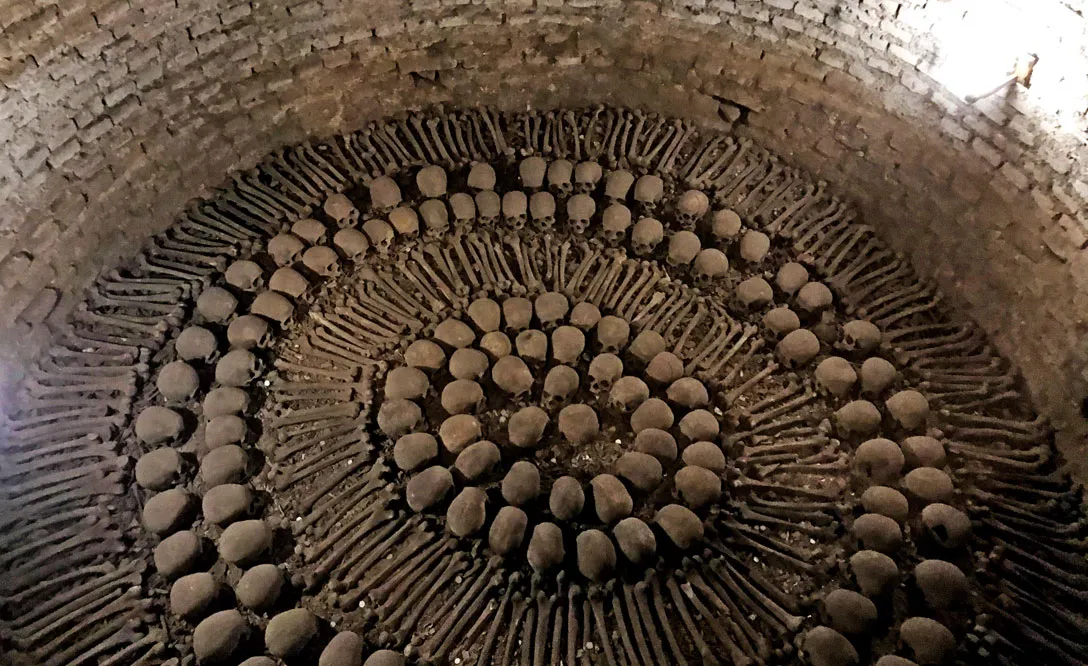
The catacombs under the Basílica de San Francisco
As I already said, my favorite part of Lima is the Malecón, the coastal path on the cliff which stretches for almost six miles and allows to have a nice view of the sea from above. Here you can run, bike, surf, play tennis and even go paragliding!
Yes, even if the cliff is not so elevated, there are always strong wind currents that allow you to fly high with no effort. It’s not cheap (about $80), but it’s very exciting flying over the buildings and the ocean. And the view is worth it. If it’s not a foggy day, of course.

Paragliding over the city
At walking distance from Miraflores, you can find precolombian ruins, located in the middle of the district. Huaca Pucllana is a huge sacred complex made of clay that has survived until now, despite all the earthquakes, thanks to innovative building techniques. It’s similar to a pyramid of stairs and it’s possible to visit and climb it.

The ancient ruins of Huaca Pucllana
In the northern part of the city (20-30 minutes by taxi from Miraflores), there is Parque de la Reserva, a huge park whose main attraction is the Circuito Magico del Agua: a daily show of water, lights and music. It reminds me of the Fontana Magica of Barcelona, but here there is an entire complex made of 13 fountains that dance following music and lights. Every evening there are two main shows, but you can enjoy the fountains for the whole night.
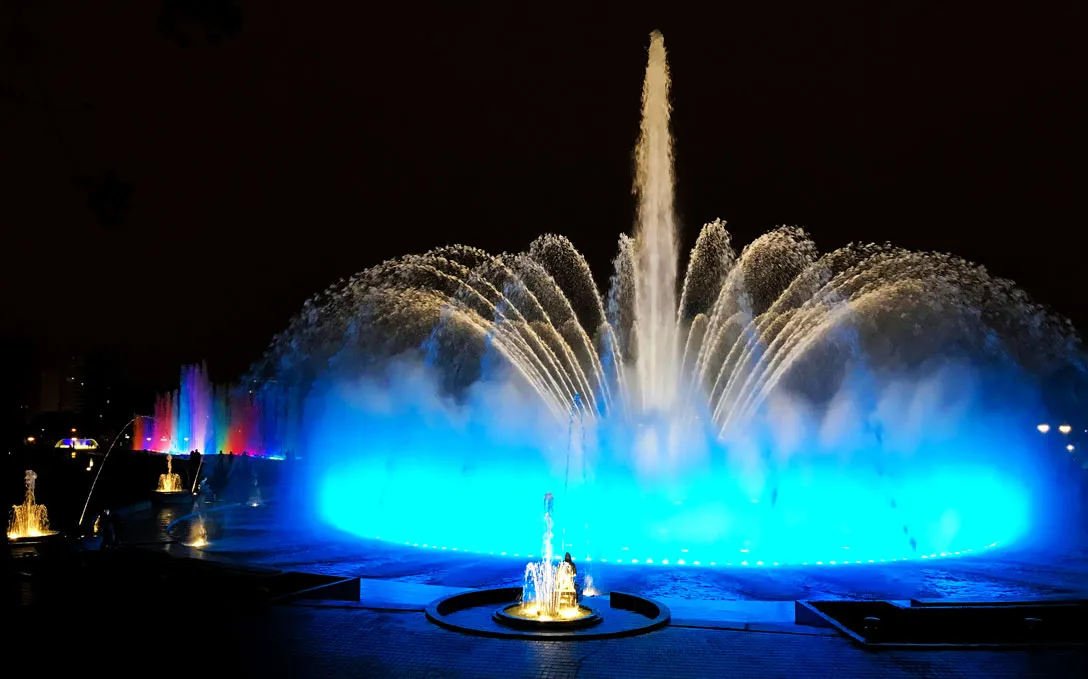
The fountains of the Circuito Magico del Agua
Near the historic center, there is the Barrio Chino, Lima’s Chinatown. It’s just a street, actually, where a huge Chinese gate let you enter and discover the best Chifas and many Chinese shops.
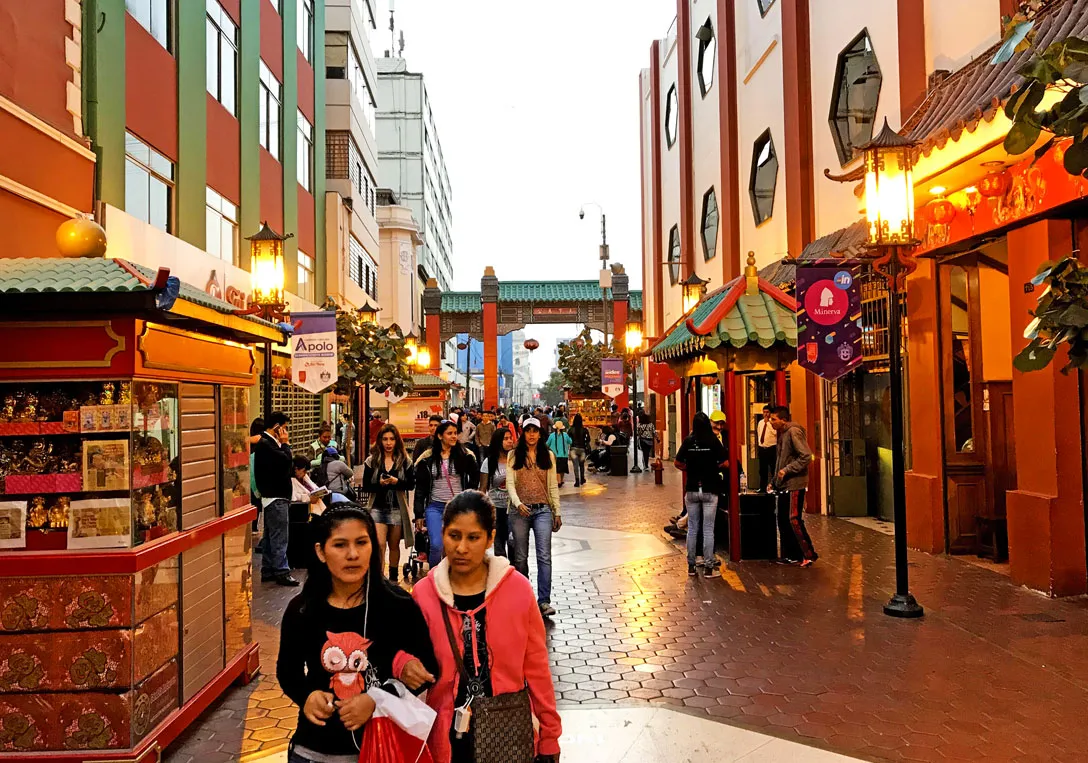
Barrio Chino, the Lima’s Chinatown
What to do outside Lima
The first weekend we went by bus to Huacachina, an oasis in the middle of the desert. But before, we stopped on the way at Paracas where we got quads and we rode in the desert to the amazing Playa Roja, a volcanic red beach.
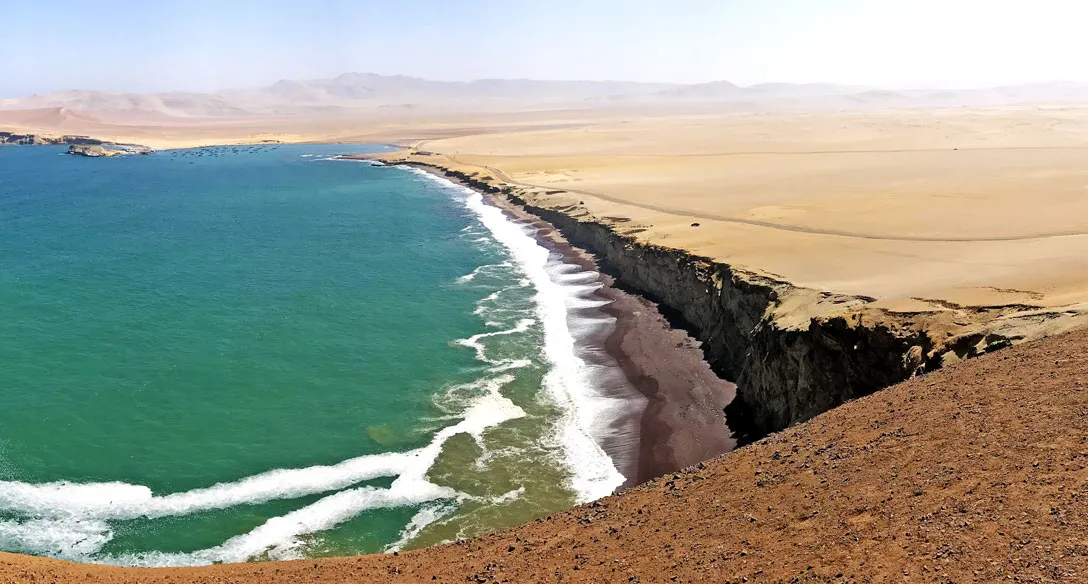
The stunning Playa Roja just where the desert ends
Then in Huacachina we did dunes buggy with a crazy driver that led us up and down the dunes as a rollercoaster!
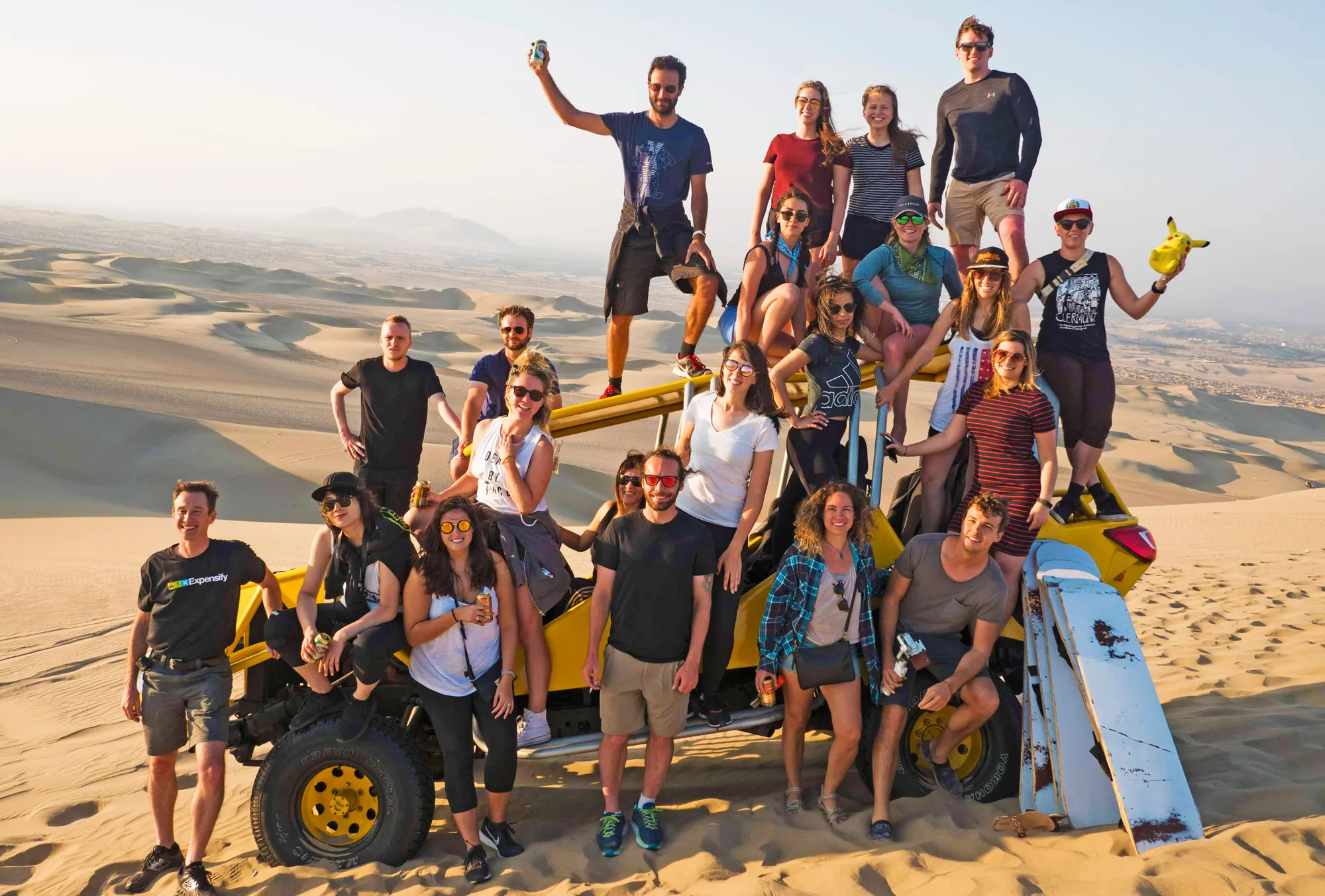
Dunes buggy with the Tribe
Once there, we grabbed our sandboards and we slid down the biggest dunes in the oasis. Amazing!
The following day, we move to Nazca, where we took a little 8-people plane and we flew over the famous Nazca Lines, mysterious ancient geoglyphs carved in the desert by the Nazca culture that represent shapes or animals, such as birds, fish, llamas, jaguars, and monkeys, or human figures.
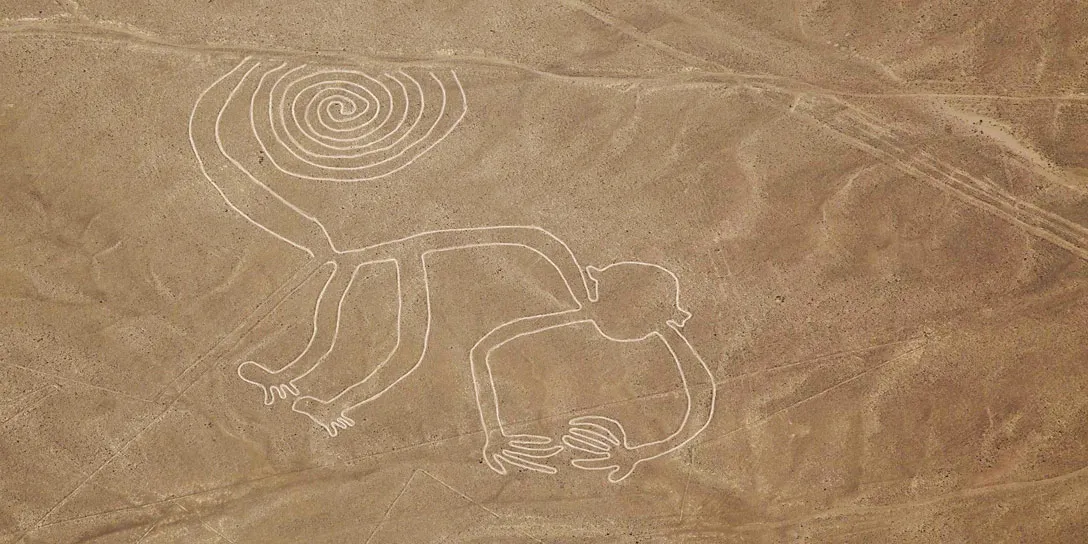
Nazca Lines representing a monkey
Another weekend we flew to Arequipa and we hiked the Colca Canyon, but this trip deserves a full post.
And finally, we spent an entire week in Cusco, hiking the Salkantay trek towards Machu Picchu. But this is another story too.
How much have I spent?
Peru is more expensive than Ecuador, especially if you live in the fancy district of Miraflores and you eat the amazing Peruvian food every day!
Here is the breakdown of my expenses:
- WifiTribe fee: $800
- Restaurants and drinks: $670
- Weekend trips: $550 (does not include the week in Cusco)
- Taxi: $50
- SIM card: $10
- Groceries: $80
- Sports: $100
If you add $350 for the flight to Lima, I have spent about $2,600, not so much more than Ecuador, actually. Especially considering how much I enjoyed the food (have I already said that?).
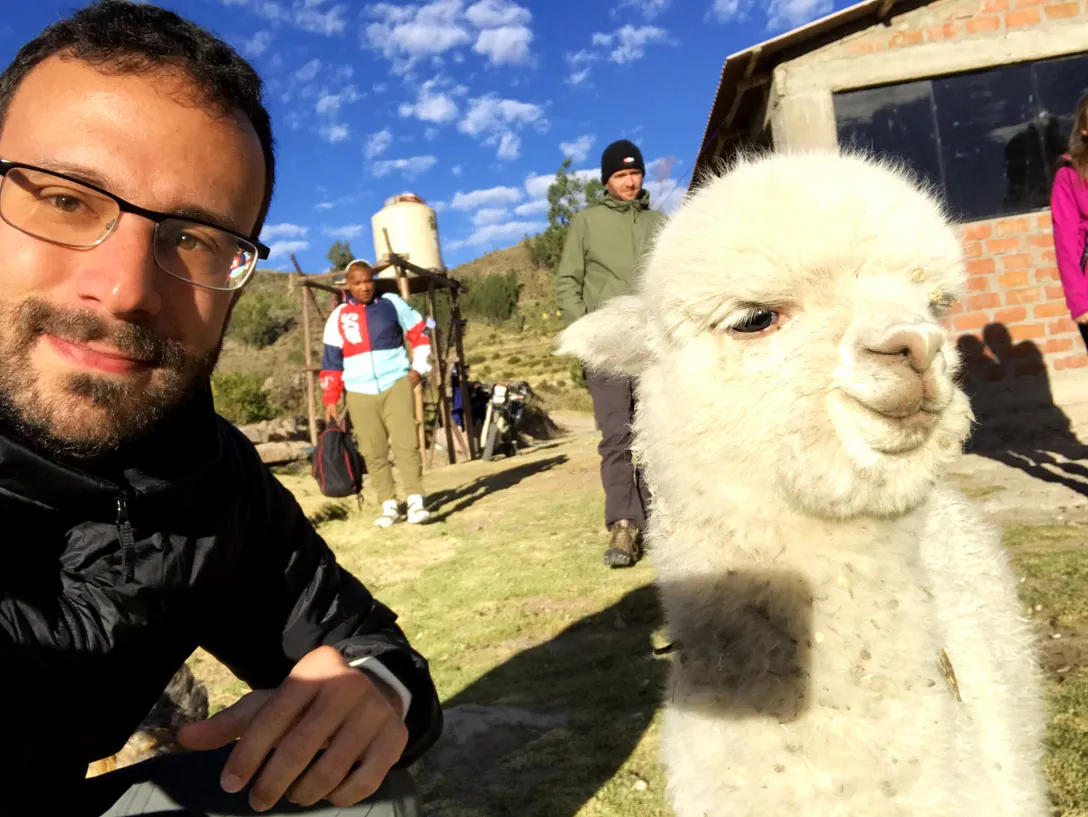
Let me close the post with a cute baby alpaca selfie!
Last thoughts
Peru is a country full of nature and history and a month is not enough to visit it. I will definitely come back!
Lima is my favorite city in South America so far (let’s see if I’ll think the same after Buenos Aires). If you visit it, I would recommend to stay more than just one day, try to enter deeply into the local culture and enjoy the best food you can have on the continent! I will miss it.
 Nomad Life
Nomad Life